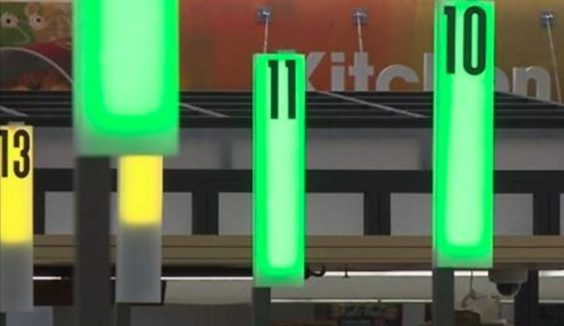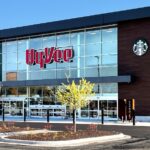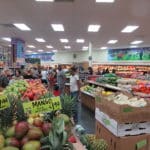
It never fails – no matter what grocery checkout lane you’re in, the one next to you seems to end up moving faster. So how can you make a better decision about what checkout lane to choose?
Several stores have tried to address the issue of long checkout lines, with varying degrees of success. Now a Nebraska startup is testing an idea that it thinks could solve the problem once and for all.
Picture your store’s checkout lanes lit up like traffic lights. A green light signifies a lane that you can speed right through. A yellow light represents a slightly longer wait. And an orange light means stay away, unless you want your ice cream to melt while you wait for your turn to pay.
The company IndaFlow has installed its “Feloh” system into a Hy-Vee grocery store in suburban Omaha. Shoppers who visit the store can see the colored lights change in real time above each cashier’s lane, to help guide them when they’re ready to check out. The lights receive signals from sensors above each lane, which detect how many people are waiting, how many items each person has, and how quickly the cashier is moving.
“Customers still have the freedom to choose any line,” IndaFlow’s creators explain. “But they are given important information so they can make the best choice.”
Compare that to other line-shortening efforts that have largely taken the decision out of customers’ hands. Some grocery stores have tried the old bank or airline ticket counter approach – forcing shoppers into a single line, and directing them to the next available cashier. But one recent study said that system does little to speed things along.
Kroger has claimed greater success with its QueVision system, which works behind the scenes to cut down on wait times. Sensors count the number of shoppers entering the store, and estimate how many cashiers will be needed to accommodate them when they’re ready to check out. Kroger claims it’s been able to reduce the average wait time from about 4 minutes to 30 seconds.
And faster checkouts make for happier shoppers. Several surveys have shown that the speed of the checkout process ranks right up there with price, cleanliness and friendliness in a list of what customers consider to be the most important attributes in a grocery store.
So while Kroger’s system might work, and the single-line system might not, most shoppers still want to feel that they have some control over the process. “Every single customer will look down the store to try and figure out which line is best for them,” IndaFlow’s creators point out. “Wouldn’t it be great to have a way to show them?”
Hy-Vee hopes to test the Feloh system in more of its stores soon. And if it catches on, you might someday see colorful checkout lights in a store near you.
Unfortunately, the checkout lights can only reflect current conditions, and can’t predict the future. So if you start to eye the checkout lane next to you longingly, as the customer in front of you pulls out a wad of crumpled coupons, needs a price check or decides to pay using exact change – not even IndaFlow has come up with a way to solve that problem. At least not yet.















